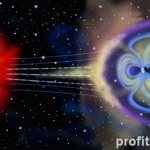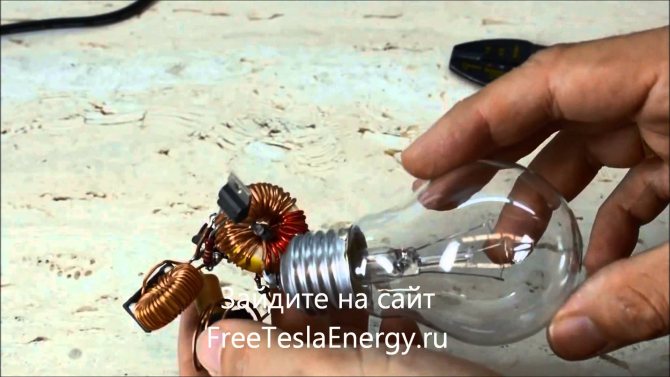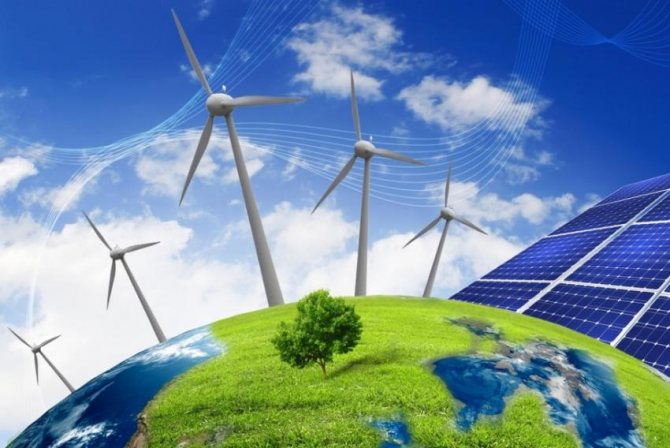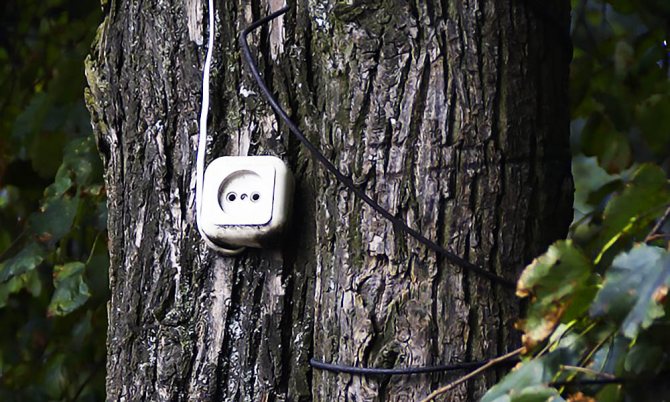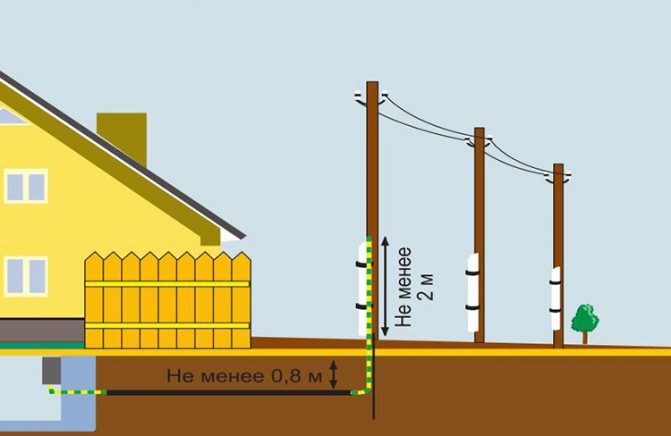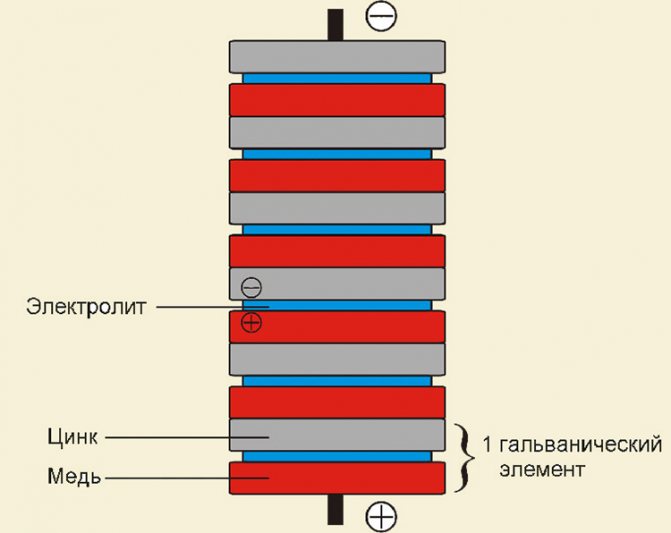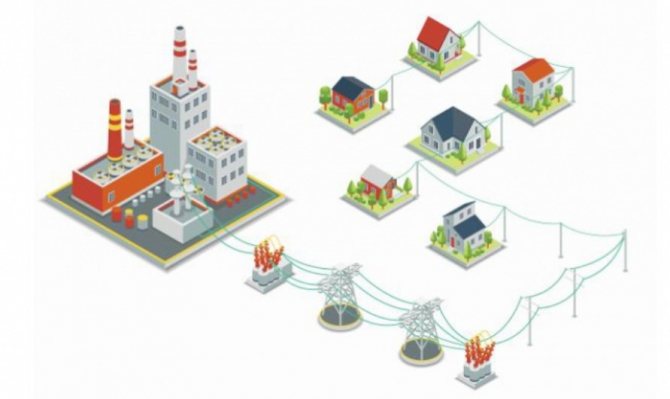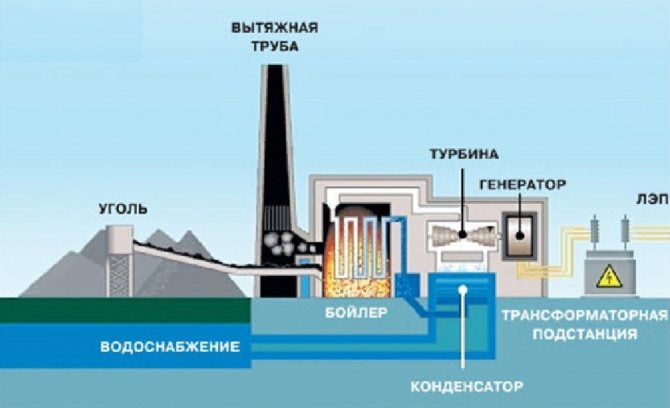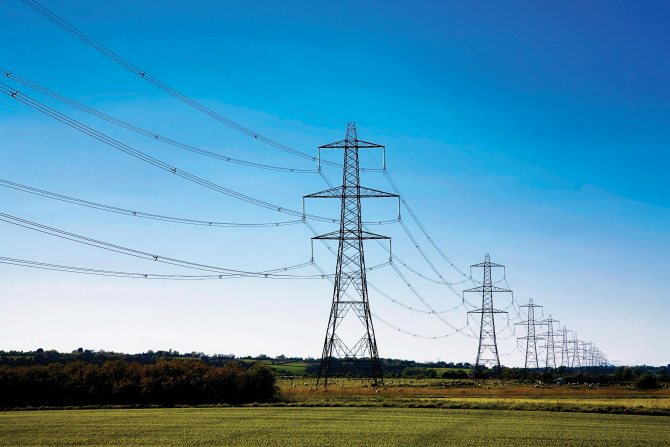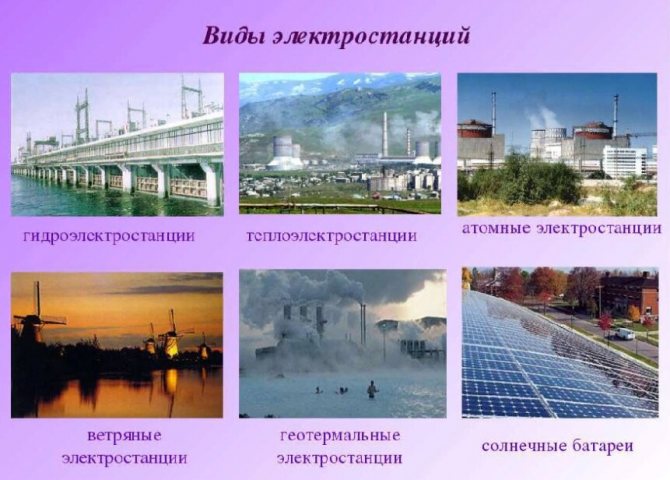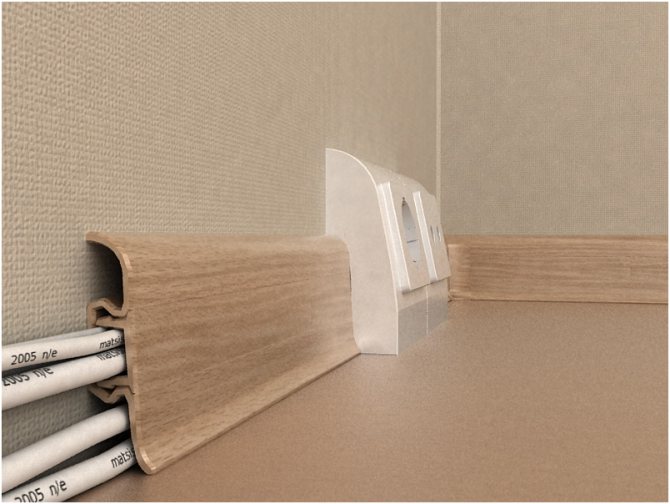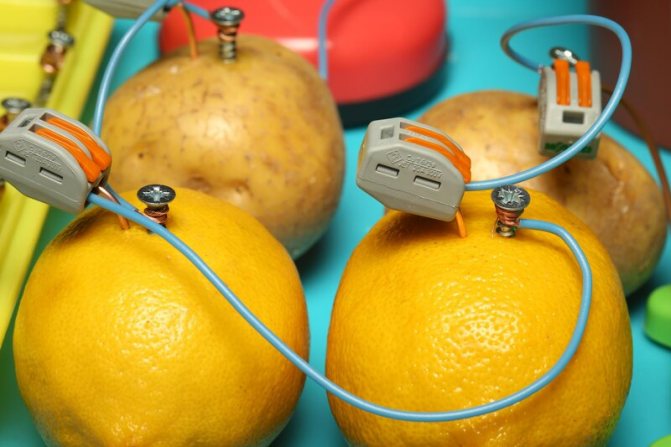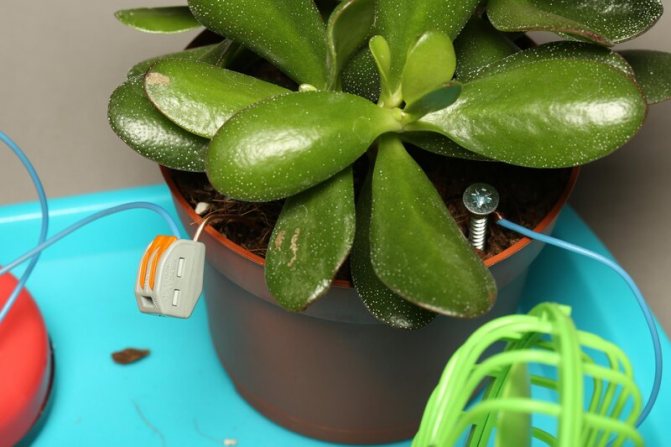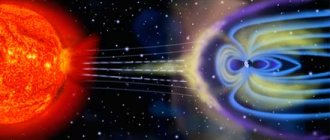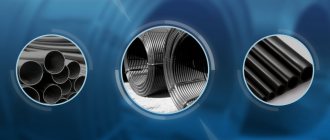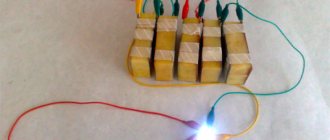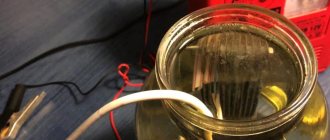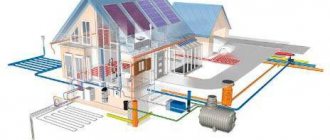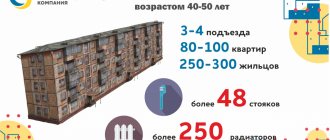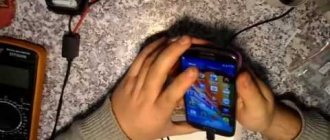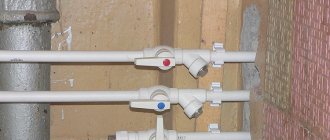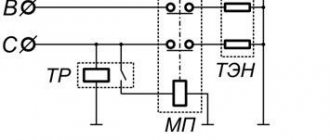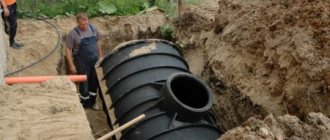Efficiency issue
Getting electricity from the earth is shrouded in myths - materials are regularly posted on the Internet on the topic of obtaining free electricity through the use of the inexhaustible potential of the planet's electromagnetic field. However, numerous videos in which self-made installations extract electricity from the ground and make multi-watt light bulbs shine or electric motors spin are fraudulent. If generating electricity from the earth were so efficient, nuclear and hydropower would be a thing of the past.
However, it is quite possible to get free electricity from the earth's shell and you can do it yourself. True, the current received is enough only for LED backlighting or for slowly recharging a mobile device.
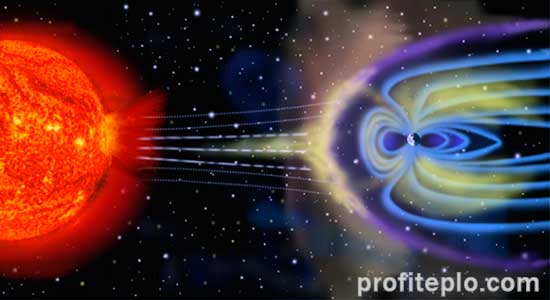
Voltage from the Earth's magnetic field - is it possible !?
To obtain current from the natural environment on a permanent basis (that is, we exclude lightning discharges), we need a conductor and a potential difference. Finding the potential difference is easiest in the earth, which unites all three media - solid, liquid and gaseous. By its structure, the soil is solid particles, between which there are water molecules and air bubbles.
It is important to know that the elementary soil unit is a clay-humus complex (micelle), which has a certain potential difference. The outer shell of the micelle accumulates a negative charge, while a positive one is formed inside it. Due to the fact that the electronegative shell of the micelle attracts ions with a positive charge from the environment, electrochemical and electrical processes continuously proceed in the soil. By this, the soil compares favorably with the water and air environment and makes it possible to create a device for generating electricity with your own hands.
Fuel from water
So what happens? Is physics right, and water cannot help us in the production of energy? This may be true, but you can get fuel from water. For example, hydrogen. Hydrogen is now produced mainly from natural gas by catalytic steam reforming. So far, this is the cheapest way, but ultimately this path leads to a dead end, because gas reserves will sooner or later also run out. Water can serve as an inexhaustible source of hydrogen. Water electrolysis is technically quite simple to carry out, but this process requires significant energy consumption. The technology will be economically viable only if cheap electricity is used, preferably obtained from renewable sources - water, wind and sun energy.
Back in 1935, Charles Garrett demonstrated the "water car" operation "within a few minutes". As you can see from Garrett's patent issued in the same year, electrolysis was used to generate hydrogen. Other inventors have tried to replicate Garrett's success. Of course, in this case, too, not everything is so simple. And many inventors who claimed to have made significant progress in obtaining fuel from water also turned out to be scammers.
For example, in 2002, Genesis World Energy announced a market-ready device that would extract energy from water by decomposing it into hydrogen and oxygen. Alas, in 2006, Patrick Kelly, owner of GWE, was sentenced in New Jersey to five years in prison for theft and payment of $ 400,000 in damages.
Another inventor, Daniel Dingel, claimed to have developed technology to use water as fuel.In 2000, Dingel became a business partner of the Formosa Plastics Group to further develop the technology. But in 2008, the company sued the inventor for fraud, and 82-year-old Dingel was sentenced to 20 years in prison.
In the same 2008, the Sri Lankan media reported about a certain citizen of this country named Tushara Priyamal Edirizing, who claimed to have traveled about 300 km in a "water car", having spent 3 liters of water. Tushara demonstrated his technology to Prime Minister Ratnasiri Vikremanayaka, who has pledged full government support for his efforts to promote the water vehicle to the Sri Lankan market. However, a few months later, Tushara was arrested on fraud charges.
Method with two electrodes
The easiest way to get electricity at home is to use the principle by which classic salt batteries are arranged, where galvanic steam and electrolyte are used. When rods made of different metals are immersed in a salt solution, a potential difference is formed at their ends.
The power of such a galvanic cell depends on a number of factors.
including:
- section and length of electrodes;
- the depth of immersion of the electrodes in the electrolyte;
- the concentration of salts in the electrolyte and its temperature, etc.
To get electricity, you need to take two electrodes for a galvanic pair - one made of copper, the other made of galvanized iron. The electrodes are immersed in the ground to a depth of half a meter, placing them at a distance of about 25 cm, relative to each other. The soil between the electrodes should be well spilled with a salt solution. By measuring the voltage at the ends of the electrodes with a voltmeter after 10-15 minutes, you can find that the system gives a free current of about 3 V.
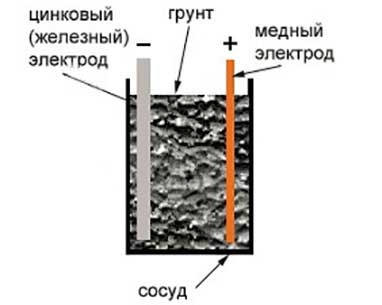

Extraction of electricity using 2 rods
If you carry out a series of experiments at different sites, it turns out that the voltmeter readings vary depending on the characteristics of the soil and its moisture content, the size and depth of the electrode installation. To increase efficiency, it is recommended to limit the contour where the saline will be poured with a piece of pipe of a suitable diameter.
Attention! A saturated electrolyte is required, and this salt concentration makes the soil unsuitable for plant growth.
There is still a chance
At the same time, it is a mistake to think that everyone involved in the problem of obtaining fuel from water is a scam. For example, respected scientist Jeffrey Hewitt even won the Global Energy Prize in 2007 for the idea of producing fuel from water. Unfortunately, the scientist himself believes that such methods of fuel extraction will remain inaccessible for everyday use for a long time due to their high cost. In his opinion, the cost of such energy is insanely high, and the time when environmentally friendly fuels can be used in everyday life will not come soon. So for now, energy from water is not a competitor to traditional energy. However, the scientist is sure that this branch of energy must be actively developed, since the use of, for example, hydrogen raw materials can increase the efficiency of power plants to 85% from the current level of 50%. And in the future, new fuel will be able to replace all existing resources.
So scientists are not in vain fighting this problem. Perhaps soon it will bear fruit. For example, in March of this year, it was reported that in the process of laboratory research, scientists from the University of California have learned how to create fuel from water. American specialists began work on the creation of an alternative type of fuel two years ago. During this time, scientists have discovered that with the correct splitting of water molecules, a fuel is obtained that in the future can replace all existing resources.The result obtained did not completely satisfy the scientists, so the research work is still ongoing.
The new method, which has been developed by experts, is capable of splitting water into several molecules. With the correct synthesis of hydrogen, processes arise that are inherent in fuel. However, there is a basic problem that scientists are trying to solve. The fact is that the split molecules undergo rapid destruction, as a result of which it is not possible to synthesize all the elements.
To date, scientists are working to create a method that would make it possible to use all the obtained elements. Of course, this may turn out to be a duck again, but it may not. And if the results of scientific work turn out to be positive, then humanity will receive a new alternative type of fuel, the resources of which will be unlimited.
Zero wire method
The voltage is supplied to a residential building using two conductors: one of them is phase, the other is zero. If the house is equipped with a high-quality grounding circuit, during the period of intensive electricity consumption, part of the current goes through the grounding into the ground. By connecting a 12 V light bulb to the neutral wire and ground, you will make it glow, since the voltage between the zero and ground contacts can reach 15 V. And this current is not recorded by the electric meter.
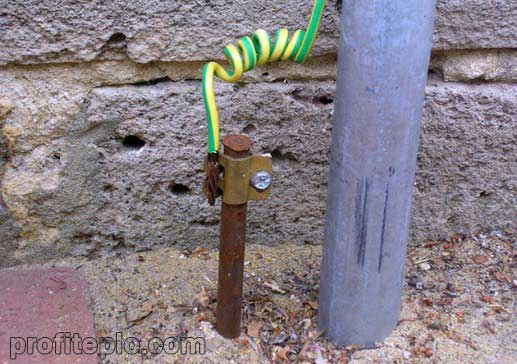

Extraction of electricity using a neutral wire
The circuit, assembled according to the principle of zero - energy consumer - earth, is quite working. If desired, a transformer can be used to compensate for voltage fluctuations. The disadvantage is the instability of the appearance of electricity between zero and ground - this requires that the house consumes a lot of electricity.
Note! This method of obtaining free electricity is suitable only in a private household. Apartments do not have reliable grounding, and pipelines of heating or water supply systems cannot be used as such. Moreover, it is forbidden to connect the ground loop to the phase to obtain electricity, since the grounding bus turns out to be at a voltage of 220 V, which is deadly.
Despite the fact that such a system uses the earth for work, it cannot be attributed to the source of earth's electricity. How to get energy using the electromagnetic potential of the planet remains open.
Power generation
The production or generation of electricity is the process of transforming other types of energy into electrical energy. The process itself is carried out by power plants.
Electricity is not a primary type of energy. This is its main feature. It does not exist in nature in industrial quantities, so it must be produced. Typically, electricity is produced using specialized generators in industrial systems - power plants.
Main technological processes
The main stages of electrical production:
- Generation
- Energy transfer
- Distribution
- Accumulation
- Recovery
Central technological processes in the production of electricity. The entire technological process of generation is monolithic and continuous. Various energy systems take part in it.
Electric energy is generated by stations of different types:
- Condensing (IES);
- Heating (CHP);
- With steam turbine units (PT);
- With gas turbine units (GT);
- With combined cycle plants (SG);
- With diesel hydraulic units (HPP);
- Hydropower and pumped storage (PSPP);
- Nuclear power plants (NPP);
- Geothermal stations;
- Tidal stations;
- Solar stations;
- Wind turbines (windmills);
Distribution and transmission of electricity is carried out by electric grid enterprises (PES).
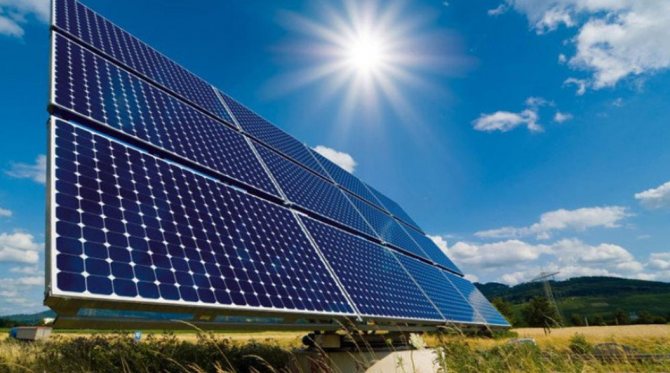

Chemical technological production consists of the preparation of raw materials, processes of transformation, separation, transition and transfer of matter.
In many petrochemical industries, I use distillers, absorbers and rectifiers for this. Steam moves in them. But such production is costly due to the complexity and size of the equipment involved.
Types of power plants
The types of power plants are classified according to the types of energy and fuel to be processed.
Nuclear power plants (NPP)
As a rule, uranium serves as the main fuel at nuclear power plants. Their energy is generated by purposefully creating small nuclear reactions. They take place in the main block of the entire plant - in the nuclear reactor. Manufacturing is very costly and is used only by financial giants or the state.
Thermal power plants (TPP) using fossil fuels
The principle of operation of such stations is quite simple. The heated water forms steam, which is fed to the steam turbine. Inside the turbine, steam begins to rotate its blades. The blades, in turn, are connected to the rotor of the generator. The energy of the steam thus becomes mechanical. This method is less expensive and more popular among private manufacturers. Such stations can be local. They are more accessible for installation than nuclear power plants.
Hydroelectric stations (HPP)
The HPP system works even easier. The water flows directly into the turbine blades and starts the rotor of the electricity generator. It is more profitable to place such stations near a reservoir or additionally mount a water tower. This method of generating energy, due to its simplicity, is popular among large companies and private producers.
Wind power plants (WPP)
The kinetic energy of the wind starts the movement of wind turbines and, entering the turbine blades, starts the operation of an electric generator. This method is unpopular among private producers, due to the peculiarities of the weather conditions in some regions and the high cost of modern wind installations.
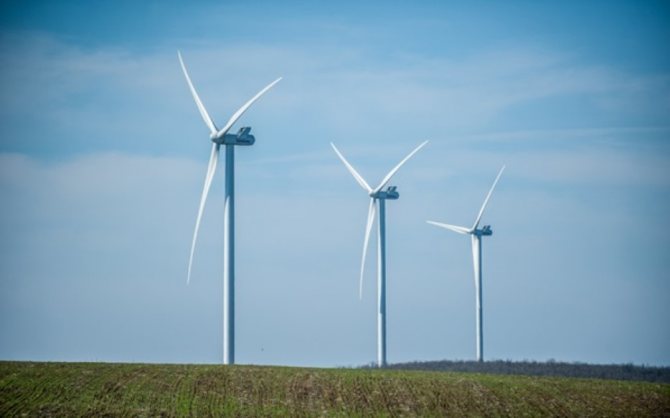

Geothermal power plants
This type of power plant receives energy from the heat of the Earth using underground wells. The heat from them enters the generator in the form of hot water or steam. This is not the most cost-effective way to generate energy for private producers. These plants require high temperature coefficient geothermal sources and special thermal cycles. The costs of such a construction are very high.
Solar power plants (SES)
Such power plants receive concentrated energy from the sun using mirrors. The sun's rays hit the receivers, which heat up and generate heat energy. The only disadvantage of such stations is the inconstancy of the energy source. But, as a rule, there is enough stock for uninterrupted operation. And solar generators are quite budgetary, easy to operate and transport.
The energy of the magnetic field of the planet
The earth is a kind of spherical capacitor, on the inner surface of which a negative charge accumulates, and on the outside - a positive one. The atmosphere serves as an insulator - an electric current passes through it, while the potential difference is preserved. The lost charges are replenished by the magnetic field, which serves as a natural electric generator.
How to get electricity from the ground in practice? Basically, you need to connect to the generator pole and establish a reliable ground.
A device that receives electricity from natural sources must consist of the following elements
:
- conductor;
- the ground loop to which the conductor is connected;
- emitter (Tesla coil, high voltage generator that allows electrons to leave the conductor).
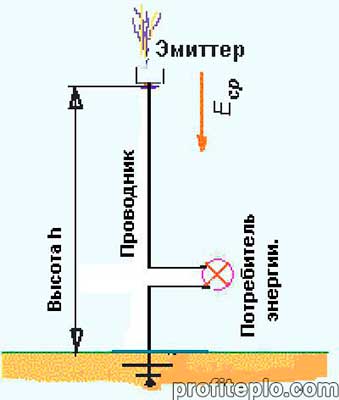

Electricity generation scheme
The upper point of the structure, on which the emitter is located, should be located at such a height that, due to the difference in potentials of the planet's electric field, electrons rise up the conductor. The emitter will release them from the metal and release them in the form of ions into the atmosphere. The process will continue until the potential in the upper atmosphere becomes level with the electric field of the planet.
An energy consumer is connected to the circuit, and the more efficiently the Tesla coil works, the higher the current in the circuit, the more (or more powerful) current consumers can be connected to the system.
Since the electric field surrounds grounded conductors, which include trees, buildings, various high-rise structures, then in the city limits the upper part of the system should be located above all existing objects. It is not realistic to create such a structure with your own hands.
Related videos:
Business profitability
In the past decade, consumer demand for electricity around the world has risen by almost 50%, and the amount of energy used has exceeded the amount of fuel available for it several times. According to the data and calculations of experts, in 2020 the demand for electricity will rise at least 3 times.
Therefore, as a supplier and generator of electrical supply, you will be dealing with one of the most sought-after products in the entire world. We recommend that you look at existing manufacturers of power plants and generators and do competitive intelligence.
13.01.2020
Transfer schemes
At first glance, the complete diagram of the transmission of electricity from a rotating turbine to an apartment outlet may seem complicated and confusing, but if you look at the diagram, everything falls into place.
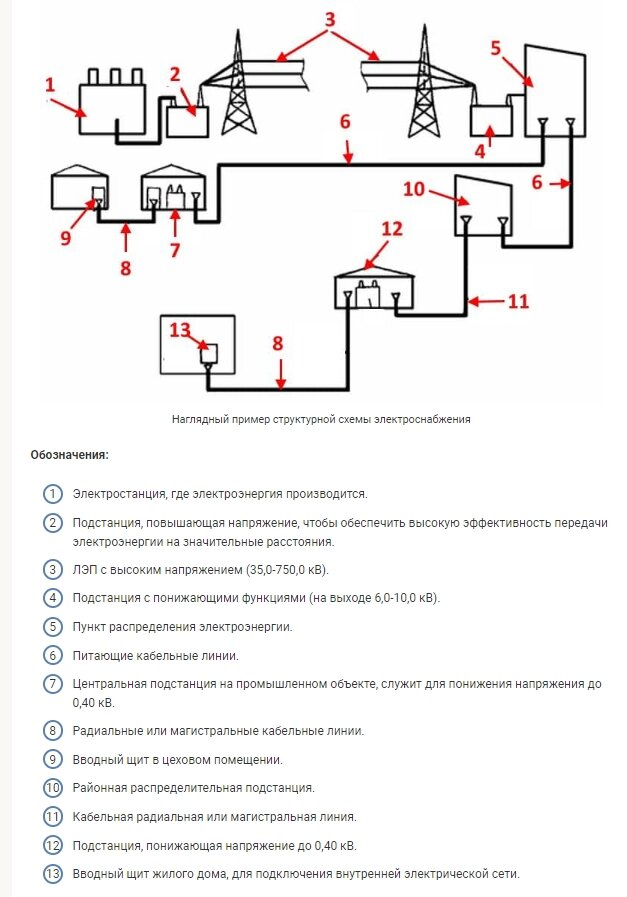

Block diagram of power supply
It is worth noting that if there are no industrial enterprises in the city, then the substation for the industrial facility and the entire branch presented for it will not exist in reality. All other electrical infrastructure will be present prior to the invention of wireless transmission.
In the above diagram, you can see the trunk cable lines. They can be of two types - single and double-sided. Bilaterals are more common today, since single ones are less reliable, plus it is difficult to find the place of damage on them. Thus, the end user is always supplied with electricity, and breakdowns on the lines are invisible to him.
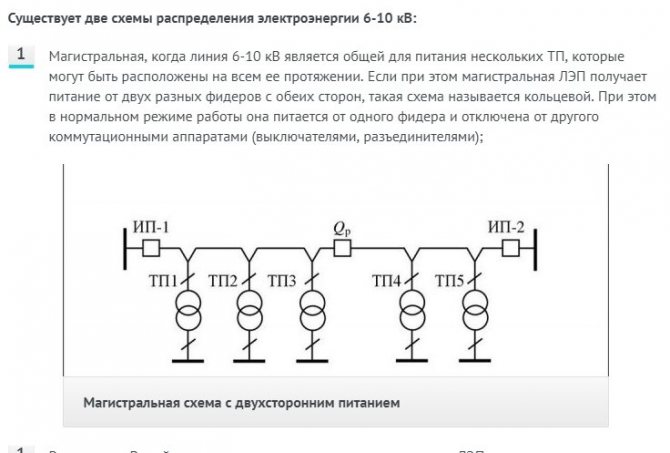

Two-way highway diagram
Electricity is produced by using renewable and non-renewable energy sources to rotate a turbine. The turbine drives the rotor of the generator, which generates electricity. To transmit current, the transformer increases its voltage, and before it is put into the city network, the voltage is lowered back. Thus, losses and costs of building networks are reduced. After that, electricity is supplied to the city substation, which powers the regional substations, and from them branched lines are laid to end consumers.
Single-phase and three-phase input
Boilers, room heating appliances and other powerful consumers of electricity have become part of the everyday life of almost every household. The list of equipment used in a private house is growing every year, due to the desire of the owners to create the most comfortable living conditions. This fact is often the basis for a three-phase connection. However, this desire is not always justified from a technical point of view.
How to determine the number of phases
Three-phase input does not mean that the user will be able to increase the load on the network indefinitely in the future. The maximum power consumption indicator does not exceed 15 kW, regardless of how many phases are planned in the design documentation.The rate is assigned by Energosbyt, which is indicated in the technical specifications.
When choosing the input phases, it should be taken into account that the RCD, the meter and the automatic 3-phase connection are larger than the 1-phase devices. When placing them, you will need to think about ways of masking or even provide a separate room so that large objects do not spoil the aesthetics of the interior or exterior.
You cannot do without a three-phase input in the presence of the following units:
• electric boiler;
• an engine with a high torque indicator;
• electric stoves;
• generator, etc.
According to regulatory documents, 3-phase input is prescribed for households in which equipment with a consumption of 12 kW or more is installed. Experienced specialists are always reinsured, therefore they advise choosing this type of connection if there are devices from 7 kW.
Advantages and disadvantages of three-phase input
More convincing arguments when choosing the type of connection is the analysis of the pros and cons of a three-phase input.
• Possibility of increasing the power up to the norm of 15 kW. If a higher value is required, it is necessary to obtain a corresponding permit from Energosbyt.
• If there is a large number of powerful electrical appliances in the house, there is a prospect of their divorce in different phases. Thanks to this, the devices will not affect the quality of each other's work, the problem of phase imbalance is solved.
• Ability to use units that require 380V voltage.
Before deciding on the choice, it is worth considering the disadvantages of a 3-phase input.
• Increasing the voltage in the network creates favorable conditions for fire or smoldering. In order to prevent danger (fire, electric shock), it is recommended to equip the network with a protection device.
• Dimensional 3-phase input equipment does not always fit into the interior or exterior.
• To obtain a permit, you will need to spend a lot of time collecting documents and their approval.
Putting electrical wiring into operation
The wiring should be put into operation gradually, that is, it is necessary to check all distribution groups, all machines one by one. First one - turn on, check and move on to the next.
Important! All elements of the electrical network must be in good working order, in the event of a breakdown of one of the elements, it should be changed immediately.
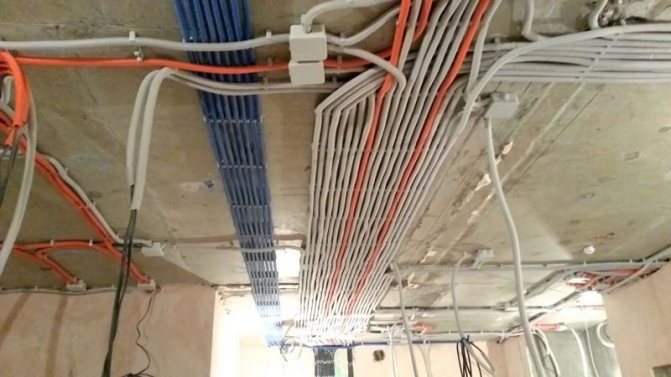

Do-it-yourself electrical wiring in a private house
Own electricity and own water
Living outside the city, and having a small river or stream next to your house or dacha, you can always provide yourself not only with water, but also with your own electricity. Of course, you can purchase a set of micro-hydroelectric power plants, which are widely represented on the domestic market, but you can make a similar device with your own hands.
For the manufacture of the simplest design, you will need a car generator, a bicycle or other wheel, a pair of pulleys of different diameters or sprockets, as well as a metal profile (corner), which is available.
The structure of the wheel and generator fastening is made of a metal profile. The wheel can be positioned parallel or perpendicular to the plane of the water, it depends on the type of reservoir. Blades made of metal, plastic, plywood or other material are attached to the wheel. A pulley (sprocket) of a larger diameter is attached to the wheel axle.
The generator is mounted, a pulley (sprocket) of a smaller diameter is attached to its shaft. Pulleys are connected by means of a belt drive, sprockets - by means of a chain. Wires are connected to the generator terminals. The wheel is placed in water. The installation is now ready for operation
Power lines
It is worth talking about which networks are used to transmit electricity. From the power plant to the final consumer, electricity goes not only through the step-up transformer and high-voltage lines.If you look at the modern city from above, you will notice a whole bundle of wires forming a single network.
To get to the consumer, the current from the high-voltage lines re-enters the transformer, but this time the voltage drops. After that, it is fed to the distribution network and diverges to industrial enterprises that have their own substation to obtain the voltage they need, to city substations, which disband electricity through main cables and to regional substations.
It will be interesting to you Purpose and function of the residual current device (RCD)
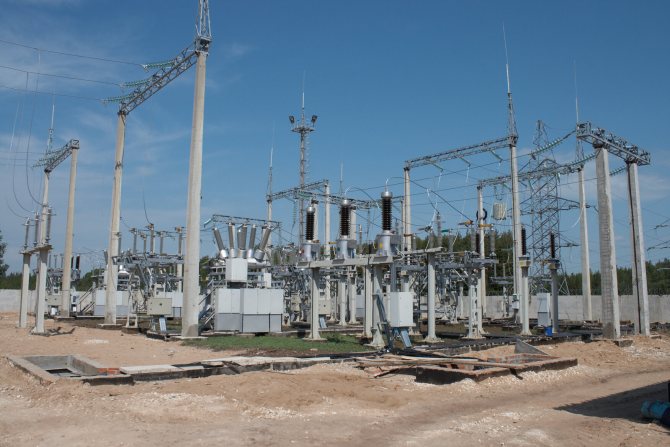

City substation
From district substations through power lines, electricity is supplied to private, apartment buildings and infrastructure facilities. In sleeping quarters, cables from substations are mainly laid underground, from where they go to the entrance shield, which further distributes current to each outlet and light bulb in the house.
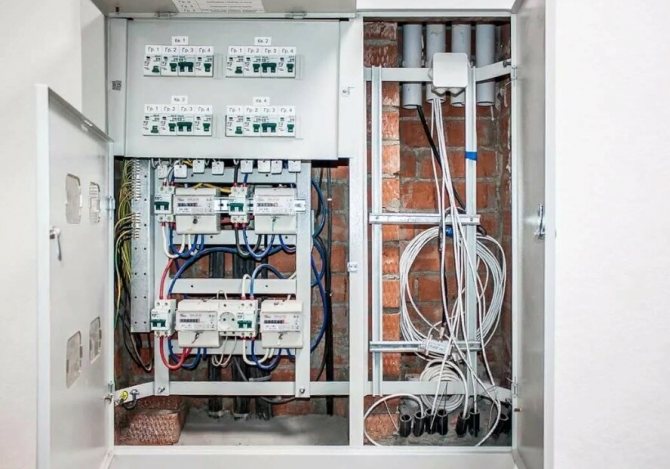

High-rise building power box

